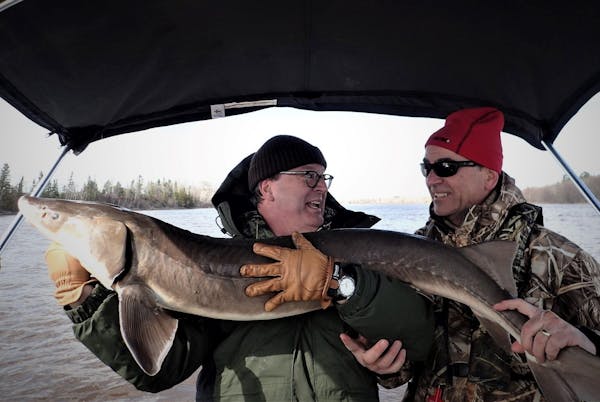Minnesota will pour millions of dollars into recreational trails, environmental education, water protections, and a smorgasbord of wildlife conservation efforts specified in the latest grant package funded by state lottery proceeds.
In all, this year's Environment and Natural Resources Trust Fund bill will distribute $77.6 million to 101 different projects, more projects than ever before. The bill, shaped in 2023 by the Legislative-Citizen Commission on Minnesota Resources (LCCMR), sailed smoothly through the Legislature and was signed into law Monday by Gov. Tim Walz.
All new in the list of projects is the creation of a 110-mile Driftless Area Hiking Trail in southeastern Minnesota. Volunteers would shepherd the proposed backpacking trail, which has been likened to the Superior Hiking Trail along the North Shore. The initial appropriation of $426,000 will be aimed at route planning, obtaining land permissions, and other preliminary work.
Becca Nash, LCCMR executive director, said she's thrilled by the bill's early passage.
"None of us has any memory of the bill passing this early in the session,'' she said.
The speedy approval is an extra gift for the grantees, Nash said, because it allows them to move ahead sooner than usual. Project work plans must be approved by the LCCMR before the grant money can start to flow in July.
One of the largest appropriations authorized in the bill is $5 million to expand and rehabilitate existing state trails, including high-priority bridge repairs or replacements. Trail building also will be incorporated into other projects, such as the $2.9 million upgrade to Spring Lake Park Reserve in Dakota County.
Game and nongame wildlife projects are sprinkled throughout the bill. The conservation efforts pertain to walleyes, deer, elk, bison, wolves, trumpeter swans, butterflies, moths, small weasels, loons and other critters.
Swans and loons, for instance, could benefit from the $254,000 earmarked for the Minnesota Pollution Control Agency to educate the public about the dangers of using lead fishing tackle and promoting lead-free alternatives. Ingesting lead fragments from lake bottoms is poisonous to swans.
To better understand swans in the state, the University of Minnesota will receive $180,000 to model historical population abundance of the species and to estimate future population dynamics.
The bill includes a $1.77 million grant for the Department of Natural Resources (DNR) to reintroduce bison to Camden State Park in Lynd, Minn. DNR says it's part of a statewide effort to preserve the "American Plains bison genome.''
To help conserve walleyes, the Science Museum of Minnesota will use $1.12 million to reconstruct historical lake conditions in Minnesota walleye fisheries "to identify factors linked to past success to guide effective management in the uncertain future.''
Regarding wolves, the grant package will send more money to the University of Minnesota's Voyageurs Wolf Project "to continue to study summertime wolf predation on deer, moose and other species.'' The Phase III grant of $996,000 also is designed for the U to "share natural history of this species with the public.''
At least 14 of the LCCMR-chosen projects promise to deliver environmental education, mostly to various segments of youth. One of the grants, for $500,000, goes to Friends of the Boundary Waters to teach a course called "The Boundary Waters is Our Backyard'' to school students in Ely and Cook County.
Together, the educational grants exceed $6.5 million.

Packers QB Love agrees to terms on 4-year contract extension worth $220 million, AP source says
Fairchild's one-out, 10th-inning RBI double lifts Reds over Rays 3-2
Coughlin holds into CPKC Women's Open lead; Canadian star Henderson derailed by closing bogeys

Taylor Pendrith rolls into second-round lead at 3M Open


